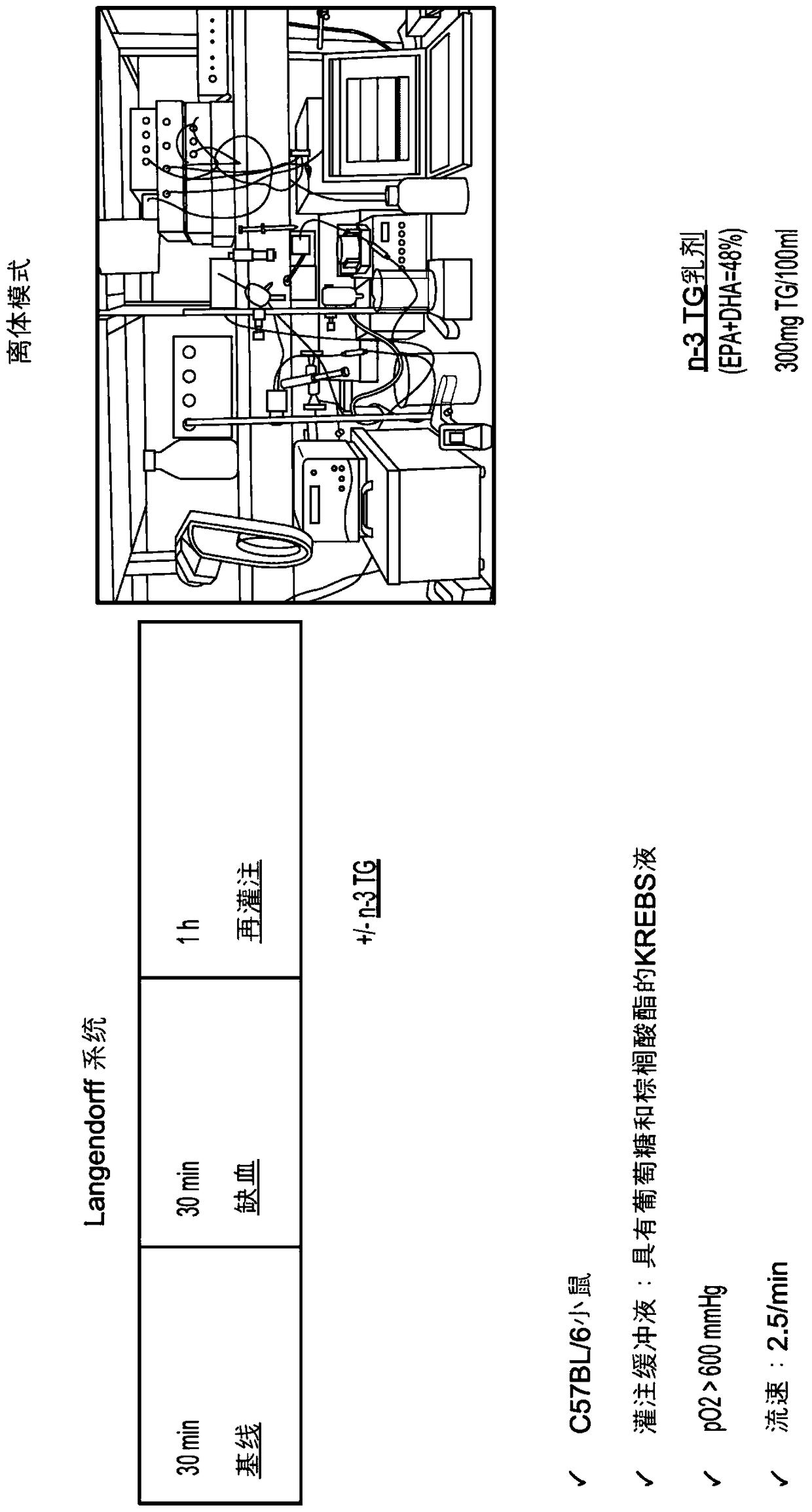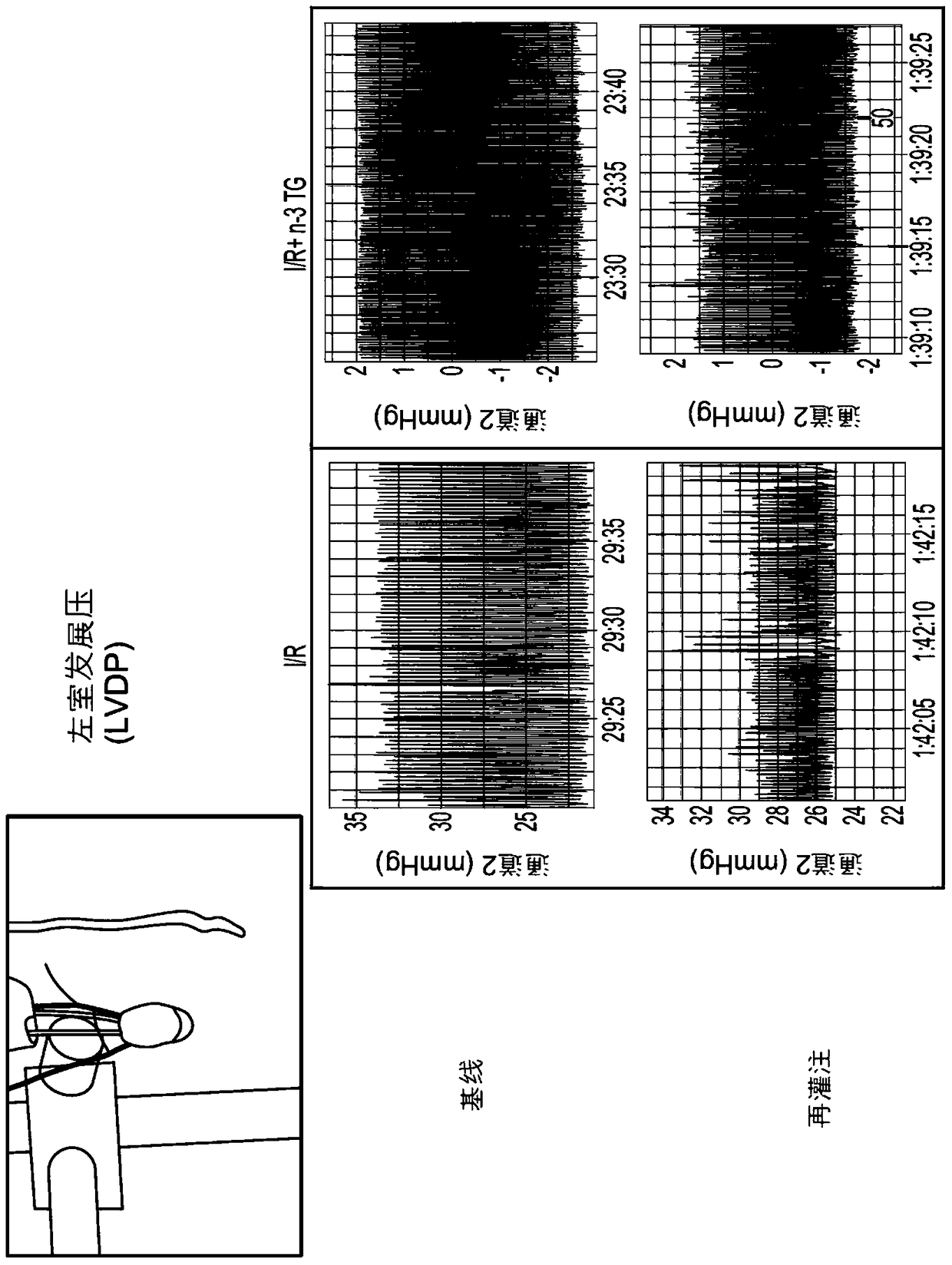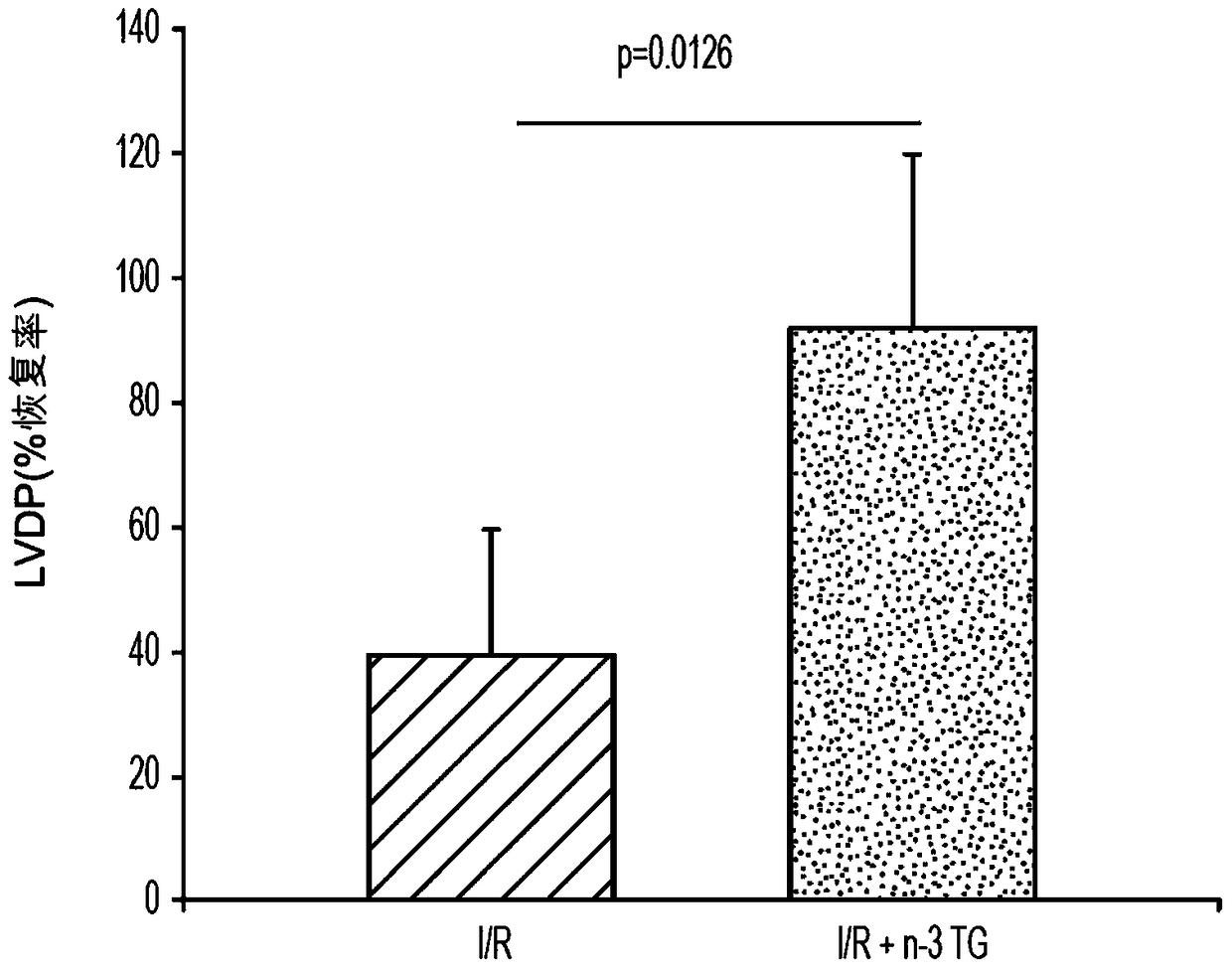Reperfusion with omega-3 glycerides promotes protection of donor organs for transplantation
A technology of diglyceride and triglyceride, which is applied in the preservation, application of human or animal body, and medical preparations containing active ingredients, etc., can solve problems such as acute and chronic rejection reactions
- Summary
- Abstract
- Description
- Claims
- Application Information
AI Technical Summary
Problems solved by technology
Method used
Image
Examples
preparation example Construction
[0152] The preparation of such n-3 glyceride infused emulsions is known in the art. The omega-3 lipid based infusion emulsions according to the present invention are oil-in-water (o / w) emulsions in which the external continuous phase is a purified or sterilized infusion buffer for storing organs / tissues. Such n-3 glyceride emulsions can be obtained by standard methods, ie by mixing the oil components followed by emulsification and sterilization. The pH of the lipid emulsion can be adjusted to a physiologically acceptable value, preferably a pH of about 6.0 to about 9.0, more preferably about 6.5 to about 8.5. Auxiliaries and additives can be added to the oil mixture prior to emulsification or prior to sterilization.
[0153] The omega-3 glyceride infusion emulsions according to the invention can be prepared by known standard methods. Typically, the lipids, emulsifiers and other adjuvants and additives are first mixed and then topped up with water to disperse. The water may ...
Embodiment 1
[0202] Example 1: Materials and methods
[0203] All studies were performed according to protocols approved by Columbia University's Institutional Animal Care and Use Committee (IACUC) and evaluated and certified in accordance with the Institute's Guidelines for the Care of Laboratory Animals.
[0204] General Method for Preparation of Diglycerides (DG) and Triglycerides (TG)
[0205] Phospholipid-stabilized n-3 (DG and / or TG) emulsions are usually prepared from fish oils DG and / or TG (synthetic oils can also be used) and egg yolk phospholipids. In one embodiment, the amount of n-3 oil in the infused emulsion is as low as 0.05%
[0206]Each emulsion contained the required amount of n-3 oil (diglyceride or triglyceride), usually emulsified with 1.2 g egg yolk lecithin and 2.5 g glycerin per 100 mL water. The lipids of the emulsion were mixed in doubly distilled water (30 g of water) and dispersed for 10 min by means of an ULTRA-TURRAX (Janke and Kunkel KG, Staufen, West Ger...
Embodiment 2
[0211] Example 2: In Vitro Ischemia and Reperfusion of Emulsions Infused with n-3 Glycerides
[0212] A. Materials and methods
[0213] Experiments performed and modified for use with mouse hearts 1,2 . C57BL6 mice weighing 25-30 g and aged 12-14 weeks were anesthetized by injection of ketamine / xylazine protease inhibitor (cocktail) [80 mg / kg and 10 mg / kg, respectively]. The heart was rapidly removed, followed by retrograde perfusion through the aorta in a non-circulatory mode using an isovolumic perfusion system by the Langendorff technique (LT) using a Krebs-Henseleit buffer containing the following components (in mM): 118NaCl, 4.7KCl, 2.5CaCl 2 , 1.2MgCl 2 , 25NaHCO 3 , 5 glucose, 0.4 palmitate, 0.4 BSA and 70mU / l insulin. Maintain the perfusion pressure pO in the oxygenation chamber 2 >600mmHg.
[0214] Evidence in support of the methods and products of the present invention has been established by an in vitro model using rapidly removed hearts from 12-14 week ol...
PUM
| Property | Measurement | Unit |
|---|---|---|
| diameter | aaaaa | aaaaa |
| diameter | aaaaa | aaaaa |
| particle diameter | aaaaa | aaaaa |
Abstract
Description
Claims
Application Information
 Login to View More
Login to View More - Generate Ideas
- Intellectual Property
- Life Sciences
- Materials
- Tech Scout
- Unparalleled Data Quality
- Higher Quality Content
- 60% Fewer Hallucinations
Browse by: Latest US Patents, China's latest patents, Technical Efficacy Thesaurus, Application Domain, Technology Topic, Popular Technical Reports.
© 2025 PatSnap. All rights reserved.Legal|Privacy policy|Modern Slavery Act Transparency Statement|Sitemap|About US| Contact US: help@patsnap.com



